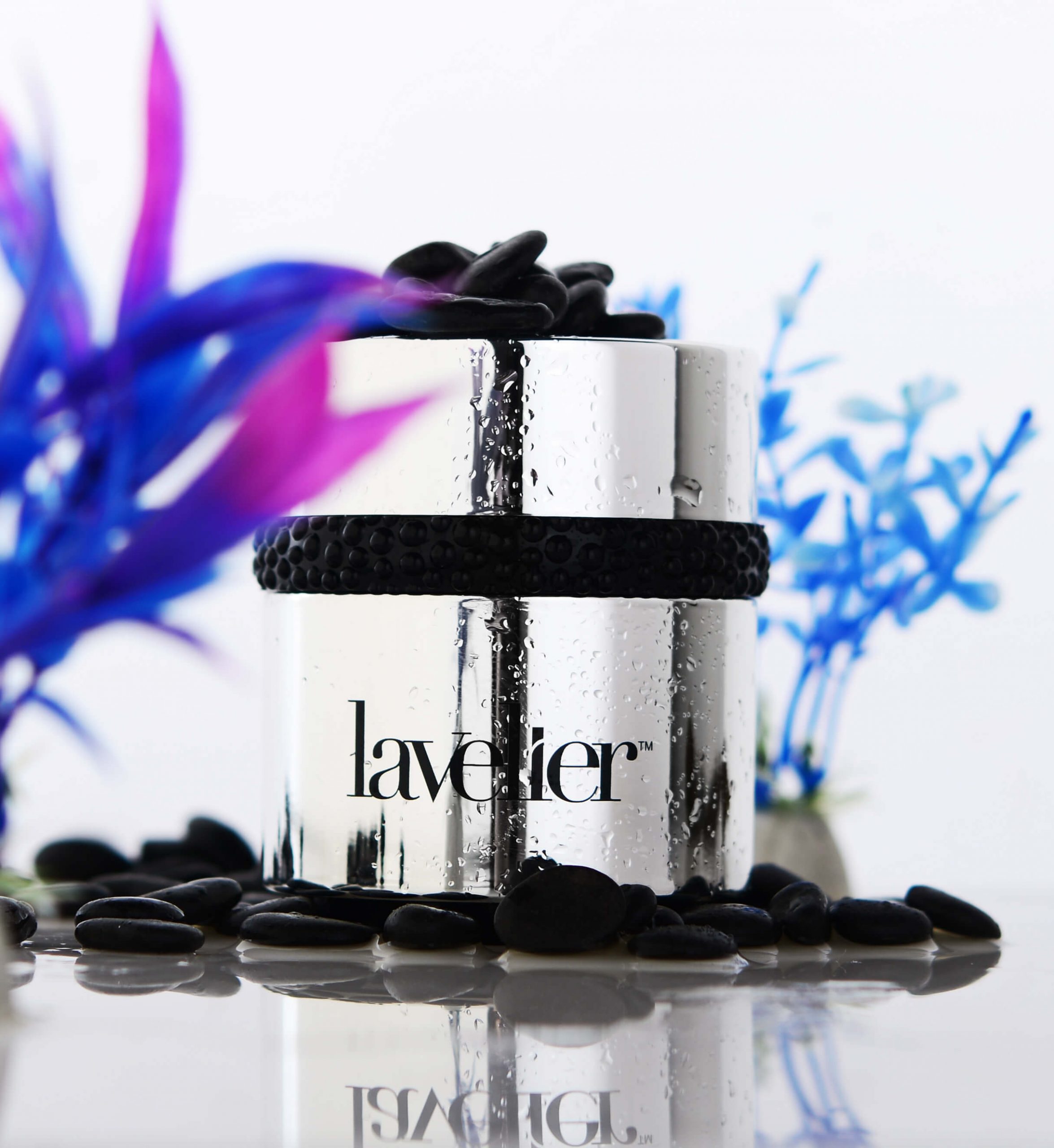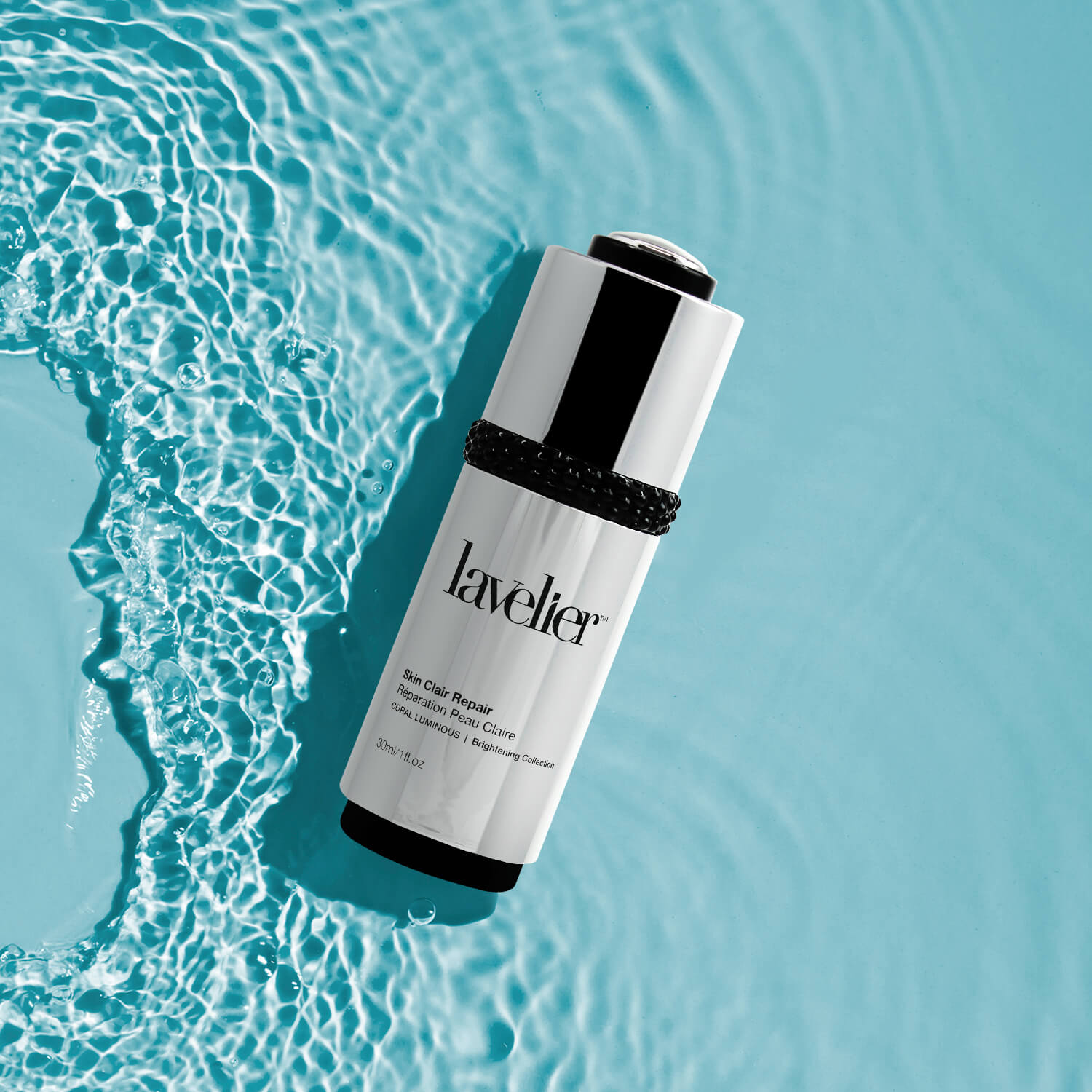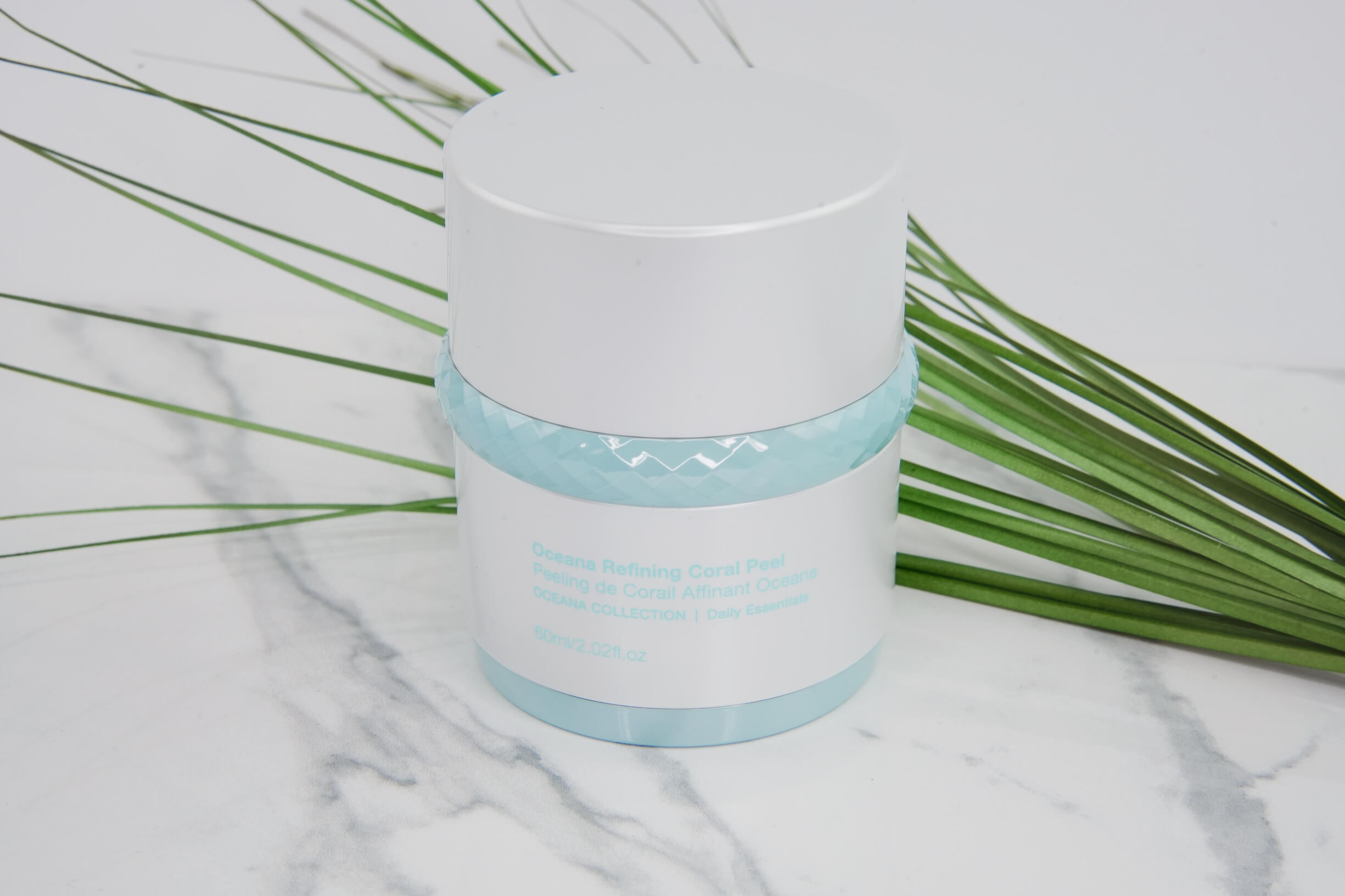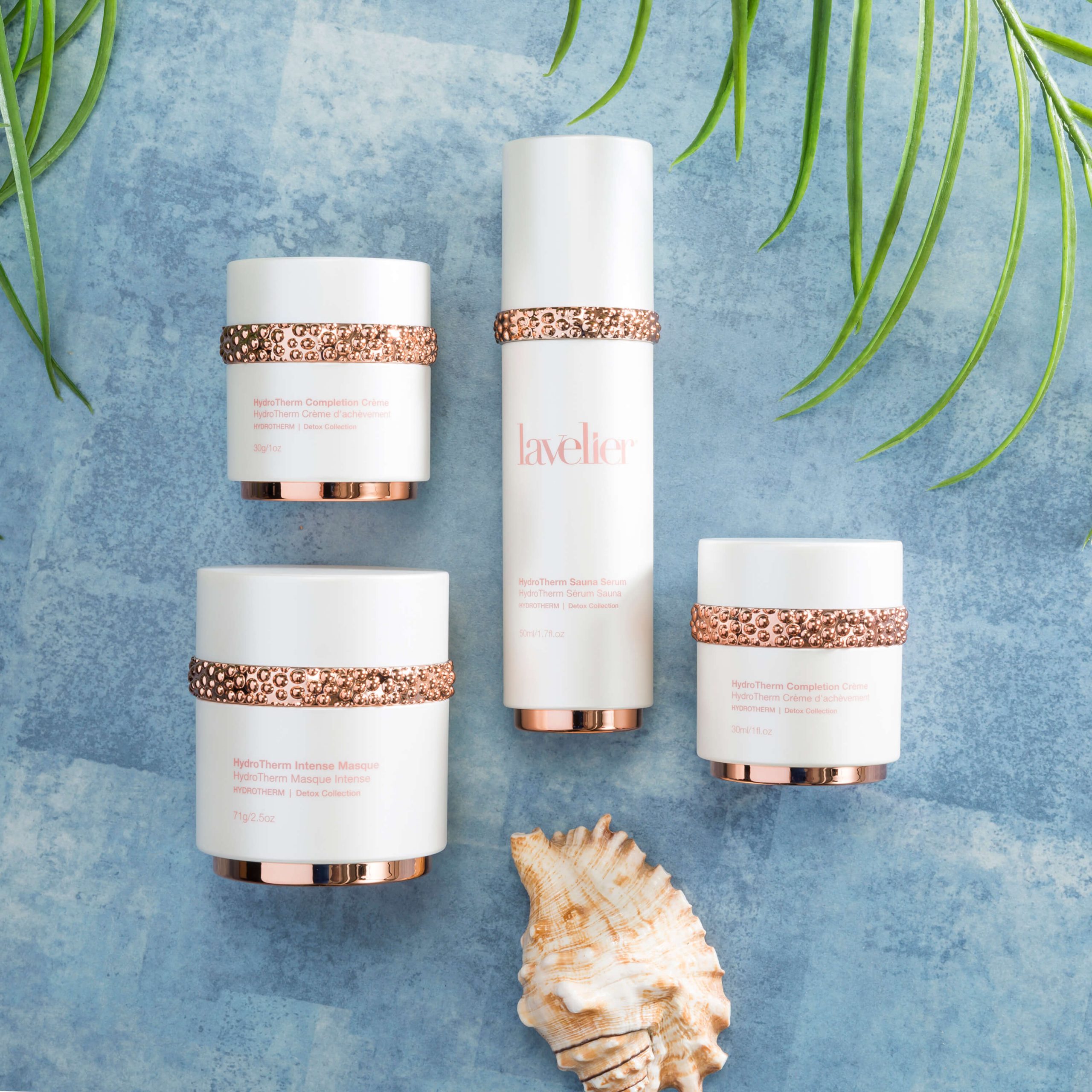Do you have dark spots on your face, or some areas of skin that look darker than others? If so, this means that you’re likely dealing with hyperpigmentation. It’s a skin condition that occurs when the skin produces too much melanin, which is the pigment that gives your skin its color.
Although hyperpigmentation is usually harmless, the uneven appearance that it gives to the skin means that people usually want it gone…ASAP! The good news is that it’s very possible to fade the appearance of hyperpigmentation for good, but this isn’t going to happen overnight. Instead, you’ll need a well-thought-out plan of attack – which Lavelier is going to help you with today!
What Causes Hyperpigmentation?
You already know that hyperpigmentation is a result of the skin producing too much melanin, but why exactly does it do this in the first place?
Well, there are actually a few different forms of hyperpigmentation, and each one causes the skin to over-produce melanin for a different reason:
Age Spots/Sun Spots/Liver Spots
This is the most common form of hyperpigmentation. It’s caused by accumulated sun damage. While a small amount of sun exposure causes your skin to produce a small amount of melanin, giving you a tan, over-exposure to the sun leads to too much melanin being produced. With the skin unable to distribute this evenly, the pigment cells end up gathering under certain areas of the skin. This means that those areas then take on a darker color.
These dark spots tend to develop on the areas of the skin that are most exposed to the sun. The face, neck, and hands are usually where you’ll notice them first.
Post-Inflammatory Hyperpigmentation
Post-inflammatory hyperpigmentation (PIH) occurs when the skin has been injured/damaged in some way. The damage leads to inflammation, which triggers melanin production.
PIH can occur anywhere on the face or body, but it only develops on the site of an injury. Acne is the most common cause of PIH but burns, cuts, or even skin irritation can also result in its development.
Melasma
Melasma is a skin condition that’s believed to be caused by hormonal fluctuations. This is why it’s most commonly seen in pregnant women. The hormones trigger melanin production, with this condition also referred to as a ‘pregnancy mask’.
While melasma can occur anywhere, it’s usually seen on the cheeks, forehead, bridge of the nose, chin, and above the upper lip. The good news is that melasma usually fades on its own. This begins a few months after giving birth, once hormone levels start to normalize. However, for some women, it can take a year or more before they start seeing a natural improvement in their skin.
How to Fade the Look of Hyperpigmentation
Now that you understand the reason behind your hyperpigmentation, let’s take a closer look at what you can do to restore an even and bright complexion:
It All Begins With SPF

First things first – stop your hyperpigmentation from getting worse. Even if your dark spots have been caused by factors other than the sun, those UV rays are only going to leave your skin looking even more discolored. Any other products that you use aren’t going to make much of a difference if the sun is continuing to stimulate excess melanin production.
This makes a good sunscreen absolutely essential. This is a product that you should be using each and every day, even during those dull and rainy winter months. UV rays are present and damaging year-round and constant protection is what your skin needs.
If you’re not a fan of conventional sunscreens, consider an SPF moisturizer instead. The Lavelier Divine Day Defense SPF 30 is a consistent bestseller because of how it feels so much lighter and silkier than a regular sunscreen. It has the texture of an exquisite face cream yet it also happens to provide broad-spectrum SPF 30 protection. Better yet, it’s packed with hydrating ingredients, vitamins, and antioxidants to give your complexion an even bigger boost.
Know Which Topical Ingredients to Use

When it comes to attempting to fade the look of hyperpigmentation, certain ingredients are better than others. Some of the best ingredients to use include:
- Kojic acid – derived from fungi, this ingredient is highly effective at lightening the look of discolored skin
- Arbutin – this is a herbal extract that targets the look of dark spots while also brightening the overall complexion
- Aloe vera – many don’t realize that this go-to ingredient for soothing the feeling of inflammation can also help to lighten the appearance of hyperpigmentation. This is down to a specific compound within aloe vera, known as aloesin
- Licorice root extract – research confirms this botanical’s ability to lighten the look of dark spots. It also boasts antioxidant properties
- Green tea extract – contains potent and unique antioxidants that tackle the appearance of discoloration
- Vitamin C – this multi-tasker benefits the complexion in multiple ways, with one being its ability to fade the visibility of hyperpigmentation
- Hydroxy acids – these help with hyperpigmentation by exfoliating the skin. This will be discussed in more detail soon!
Ideally, you want to find skincare products that combine a few of the above ingredients, just like the Lavelier Skin Clair Repair. This serum has been designed specifically to even out the skin tone and promote a brighter appearance.
Meanwhile, the Dark Circle Correcting Eye Cream from our Bird Nest Collection will do the same, but in a gentler way that the skin around your eyes will really benefit from.
The Lavelier Nourishing Vitamin C Serum would also be a great investment. It contains two forms of vitamin C, along with a cocktail of other antioxidants.
Know Which Topical Ingredients to Avoid
While the above ingredients can all be safely used on skin peppered with hyperpigmentation, there are several products out there that contain ingredients that aren’t quite so risk-free.
Steroids and hydroquinone tend to be the biggest culprits. There’s no denying that both of these ingredients are effective when it comes to treating hyperpigmentation. However, they also run the risk of producing a variety of side effects. From inflammation, rashes, and stinging skin to sores and thinning skin, these adverse symptoms can all take months to subside. Worse still, in people with darker skin tones, these ingredients can sometimes make hyperpigmentation even worse!
Sure, if there were no other alternatives out there then the temptation to try them out would be understandable. However, with so many safer ingredients to use, many of which are just as, if not more than, effective, don’t risk harming your skin with potentially dangerous ingredients!
Make Sure That You’re Regularly Exfoliating Your Skin

As we mentioned earlier, hydroxy acids are often recommended as an ingredient to use on hyperpigmented skin. These ingredients are exfoliants. They help by removing discolored skin cells from the surface of the skin.
Since hyperpigmentation runs deep, exfoliation isn’t going to instantly get rid of all of your discolored cells. However, exfoliating regularly will help to speed up how quickly the appearance of your hyperpigmentation fades.
With that said, you don’t want to go all out with a highly concentrated hydroxy acid product either. Irritating your skin in any way could lead to new spots of post-inflammatory hyperpigmentation forming in the very areas you’re hoping to lighten!
If you’re new to the world of hydroxy acids, start off with a gentle acid, like mandelic acid. It’s particularly effective in combination with other gentle exfoliants, which is what we’ve done with the Lavelier Oceana Refining Coral Peel. Even better, this exfoliator also contains some of the other beneficial ingredients that we mentioned earlier, including vitamin C and green tea extract.
Add a Derma Roller to Your Skincare Routine

Microneedling is known for being a fantastic way to reduce the appearance of hyperpigmentation. In fact, studies have found that when microneedling is combined with topical products, the complexion-lightening effects that are seen are much more impressive than if the topical products had been used alone.
This is partly down to how microneedling itself encourages a more even skin tone while also enhancing product penetration. The tiny channels that those needles create in the skin allow your skincare products to dive down even deeper each time you apply them.
While microneedling used to be a treatment that only professionals could carry out, at-home derma rollers are widely available. You’ll even find one included in the Lavelier HydroTherm Sauna Collection! Although these tools don’t penetrate quite as deeply as a professional derma roller, they’ll still make a significant difference to your complexion. Of course, they’re also much more convenient and will save you money over time!
Consider Professional Treatments
If you’ve already tried all of the above and still aren’t seeing any improvements in your hyperpigmentation, it could be time to turn to your dermatologist to discuss further options. There are a few professional treatments available that are designed to tackle the appearance of hyperpigmentation. Derma rolling is one.
Chemical peels are also a popular method for dealing with this skin condition. These basically provide the same effects as exfoliation but in a more intense way. They remove more skin than at-home exfoliators do, enabling you to see results even sooner.
Laser therapy is another option to consider. There are different lasers that can be used, each one working in a slightly different way. Whichever you opt for, you’ll likely need three or four sessions before you start to see big changes in your skin.
Dealing With Hyperpigmentation
As frustrating as it may be to see those dark spots appearing on your face, it’s important to practice patience when dealing with hyperpigmentation. This isn’t a condition that you’ll be able to eradicate overnight. Instead, start by figuring out the cause of your hyperpigmentation and then put together a plan for tackling the visibility of those dark spots. With the above tips and products by your side, it won’t be long before your skin starts to look even, bright, and vibrant once again!
Click here to shop for more bestselling skincare products from Lavelier.



0 comments on “Understanding Hyperpigmentation: A Skincare Guide”